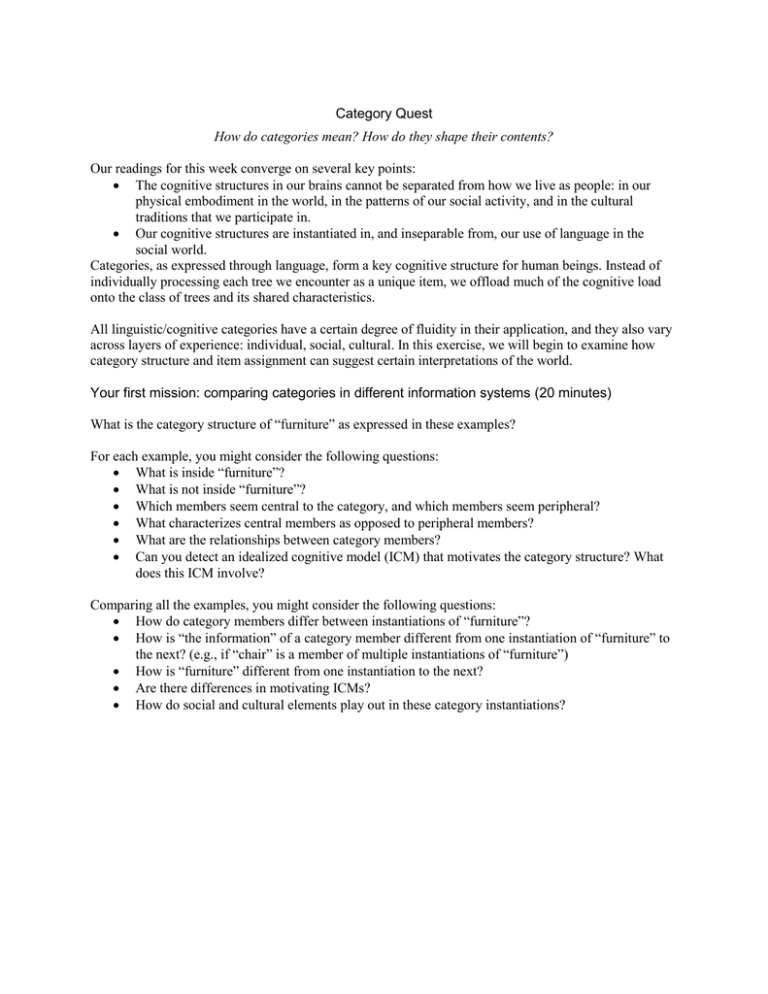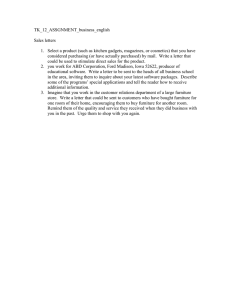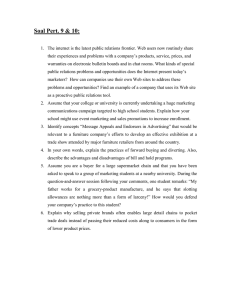Game: Category quest
advertisement

Category Quest How do categories mean? How do they shape their contents? Our readings for this week converge on several key points: The cognitive structures in our brains cannot be separated from how we live as people: in our physical embodiment in the world, in the patterns of our social activity, and in the cultural traditions that we participate in. Our cognitive structures are instantiated in, and inseparable from, our use of language in the social world. Categories, as expressed through language, form a key cognitive structure for human beings. Instead of individually processing each tree we encounter as a unique item, we offload much of the cognitive load onto the class of trees and its shared characteristics. All linguistic/cognitive categories have a certain degree of fluidity in their application, and they also vary across layers of experience: individual, social, cultural. In this exercise, we will begin to examine how category structure and item assignment can suggest certain interpretations of the world. Your first mission: comparing categories in different information systems (20 minutes) What is the category structure of “furniture” as expressed in these examples? For each example, you might consider the following questions: What is inside “furniture”? What is not inside “furniture”? Which members seem central to the category, and which members seem peripheral? What characterizes central members as opposed to peripheral members? What are the relationships between category members? Can you detect an idealized cognitive model (ICM) that motivates the category structure? What does this ICM involve? Comparing all the examples, you might consider the following questions: How do category members differ between instantiations of “furniture”? How is “the information” of a category member different from one instantiation of “furniture” to the next? (e.g., if “chair” is a member of multiple instantiations of “furniture”) How is “furniture” different from one instantiation to the next? Are there differences in motivating ICMs? How do social and cultural elements play out in these category instantiations? Example #1 Example #2 Example #3 Example #4 Example #5 Example #6 Your second mission: Interpreting items based on the categories that contain them (10 minutes) What does it mean for each book to be included in a different genre category? Example #1: Huckleberry Finn Example #2: Women, Fire, and Dangerous Things Extra: The Yiddish Policemen’s Union Extra: Atonement




